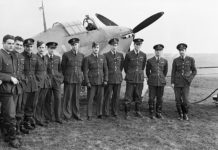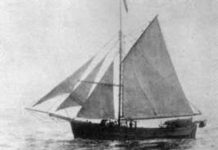Born in Victoria, British Columbia, Agnes Deans Cameron (1863-1912) excelled in education, journeyed to the Arctic, promoted gender equality, worked as a journalist, and encouraged immigration to western Canada.
Agnes Deans Cameron First Female Principal in British Columbia
When Cameron earned her teacher’s certificate at age 16, she became qualified for a position in any of British Columbia’s public schools. Following brief stints at Victoria’s Angela school for girls, a one-room schoolhouse at Comox, and a Vancouver school, she returned to the Girls’ school as third assistant. A strict disciplinarian, Cameron believed educators should ‘kindle the spark of learning within their students’, and not simply train them for jobs.
After four years as the province’s first female high school teacher, she received an appointment as British Columbia’s first female principal in 1894. It was an amazing accomplishment in that province’s patriarchal system. During that age when people were expected to know their place, Cameron would not “be bound by the parameters of discrimination”, and strongly opposed the school board’s decision to increase wages of male teachers, but not those of female teachers.
Cameron from Teacher to Journalist
Perceiving her as a troublesome woman, the trustees charged Cameron with insubordination in 1901, but support of newspapers, students, parents helped her retain her position. Later accusations against Cameron, a female teacher, and three male principals that they misrepresented students’ test papers, caused the female teacher to resign. The male principals kept their jobs without question, but Cameron fought against the charges.
She received the largest number of votes in the election for school board trustees during her suspension, and served with many who opposed her. Upon losing her argument regarding the students’ exams and having her teacher’s certificate rescinded for three years, she left the profession in 1906.
Known as a journalist with articles in various Canadian magazines, Cameron received an invitation to speak at the Canadian Press Association’s annual convention in Winnipeg. She later started work for the Western Canada Immigration Association, producing well-researched articles extolling the virtues of the region. She also made plans for an extraordinary adventure.
The New North by Agnes Deans Cameron
Over a six months’ period, Cameron and her niece Jessie Cameron Brown, toting tent, bedding, cameras, and a typewriter, travelled 10,000 miles (about 16,000 km) along the Athabasca, Peace, and Mackenzie rivers. They encountered rough terrain, mosquito hordes, and impressive people during their journey to the Arctic Circle.
Cameron’s belief in equality is evident in her book, The New North: Being Some Account of a Woman’s Journey through Canada to the Arctic. She informed readers that the aboriginal people (Inuit and Chipewyan) were not the heathens they perceived them to be, and described their “well formed conception of a Great Spirit and an Evil one”. She also shared her perceptions of their culture.
An eloquent speaker, Cameron presented lectures that included her slide show and observations of the wheat belt, the fur belt, and details of the vast territory she covered. She told of travelling by stagecoach, horseback, steamship, and scow, and described harrowing rides over river rapids.
Newspaper Reports on Cameron’s Journey and Death
The Toronto Globe reported, with amazement, the daring accomplishments of the woman who “between ice and ice had been able to follow the Mackenzie to the sea…” in one season. In Illinois, The Rockford Republic compared her exploits to those of Kipling, saying that what the British writer did for India, she was doing for Canada. The Duke of Argyle expressed envy following her presentation before a crowd of 1,000 at the Imperial Institute in England.
Cameron died of pneumonia in Victoria, British Columbia, May 13, 1912 shortly after undergoing an appendectomy. Her funeral cortege was the largest seen in that city.
According to Linda L. Hale who wrote of Cameron in The Dictionary of Canadian Biography, she was “lauded as a woman who possessed an intellect that was almost masculine in its massive proportions…”. Agnes Deans Cameron would not have appreciated the patronizing comment.






